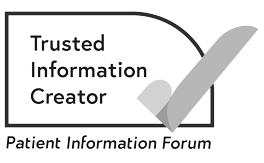Radiotherapy for skin cancer
Radiotherapy uses x-rays to destroy the cancer cells while doing as little harm as possible to normal cells. It may be used to treat some skin cancers.
What is radiotherapy for skin cancer?
Radiotherapy uses x-rays to destroy the cancer cells, while doing as little harm as possible to normal cells.
Radiotherapy may be useful if surgery might be difficult or may cause changes to appearance. For example, this may be when skin cancer:
- affects a large area
- goes deep into the skin
- affects a very visible part of the body, such as parts of the face.
You may also occasionally have radiotherapy:
- to treat a non-melanoma skin cancer that has spread to other places – this can include lymph nodes or an organ, such as the lungs
- after surgery to reduce the risk of skin cancer coming back in the same area.
Radiotherapy is not recommended for young people. This is because it can cause skin changes that may become more noticeable over time.
Having radiotherapy for skin cancer
You have radiotherapy in the hospital outpatient department. Depending on the type and size of skin cancer, you usually have several sessions of treatment. You may have radiotherapy each day, 5 days of the week, for 1 or more weeks. Your doctor will discuss your treatment plan with you.
Radiotherapy for skin cancer does not make you radioactive. This means it is safe for you to be around other people during treatment, including children and pregnant women.
Getting support
Macmillan is here to support you. If you would like to talk, you can:
- Call the Macmillan Support Line for free on 0808 808 0000.
- Chat to our specialists online
- Visit our Online Community skin cancer forum to talk to people who have been affected by skin cancer, share your experience, and ask an expert your questions.
Side effects of radiotherapy for skin cancer
Effects on the skin
The treated skin will be inflamed for up to 1 month after treatment. If you have white skin, the area may appear red. During this time, it will look as though the treatment has made things worse rather than better. This is normal. After a few more weeks, the area dries up and forms a crust or scab. Over time, the scab peels away, leaving healed skin underneath.
At first, the new skin will look pinker than the skin around it. But it should gradually fade to look more like the skin around it. If you have white skin, the treated area may become slightly paler. If you have black or brown skin, the area may get darker or paler. We have more information about radiotherapy skin reactions.
Hair loss
If you have radiotherapy to an area where hair grows, it will cause the hair in the treated area to fall out. This is often permanent. You can talk to your doctor about whether your hair is likely to grow back after treatment.
Related pages
About our information
-
References
Below is a sample of the sources used in our skin cancer information. If you would like more information about the sources we use, please contact us at informationproductionteam@macmillan.org.uk
Keohane SG, Botting J, Budny PG, et al. British Association of Dermatologists guidelines for the management of people with cutaneous squamous cell carcinoma 2020. The British Journal of Dermatology. 2021;184(3): 401–414. Available from www.doi.org/10.1111/bjd.19621 [accessed May 2024].
Nasr I, McGrath EJ, Harwood CA, et al. British Association of Dermatologists guidelines for the management of adults with basal cell carcinoma 2021. The British Journal of Dermatology. 2021;185(5): 899–920. Available from www.doi.org/10.1111/bjd.20524 [accessed May 2024].
Sharma A, Birnie AJ, Bordea C, et al. British Association of Dermatologists guidelines for the management of people with cutaneous squamous cell carcinoma in situ (Bowen disease) 2022. The British Journal of Dermatology. 2023;188(2): 186–194. Available from: www.doi.org/10.1093/bjd/ljac042 [accessed May 2024].
-
Reviewers
This information has been written, revised and edited by Macmillan Cancer Support’s Cancer Information Development team. It has been reviewed by expert medical and health professionals and people living with cancer. It has been approved by Senior Medical Editor, Professor Samra Turajlic, Consultant Medical Oncologist.
With thanks to: Dr Stephanie Arnold, Consultant; Kerry Jane Bate, Advanced Nurse Practitioner; Dr Philippa Closier, Clinical Oncologist; Sharon Cowell-Smith, Macmillan Advanced Nurse Practitioner Skin Cancers; and Dr Benjamin Shum, Medical Oncologist.
Thanks also to the other professionals and people affected by cancer who reviewed this edition, and to those who shared their stories.
Our cancer information has been awarded the PIF TICK. Created by the Patient Information Forum, this quality mark shows we meet PIF’s 10 criteria for trustworthy health information.
The language we use
We want everyone affected by cancer to feel our information is written for them.
We want our information to be as clear as possible. To do this, we try to:
- use plain English
- explain medical words
- use short sentences
- use illustrations to explain text
- structure the information clearly
- make sure important points are clear.
We use gender-inclusive language and talk to our readers as ‘you’ so that everyone feels included. Where clinically necessary we use the terms ‘men’ and ‘women’ or ‘male’ and ‘female’. For example, we do so when talking about parts of the body or mentioning statistics or research about who is affected.
You can read more about how we produce our information here.
Date reviewed

Our cancer information meets the PIF TICK quality mark.
This means it is easy to use, up-to-date and based on the latest evidence. Learn more about how we produce our information.
How we can help



